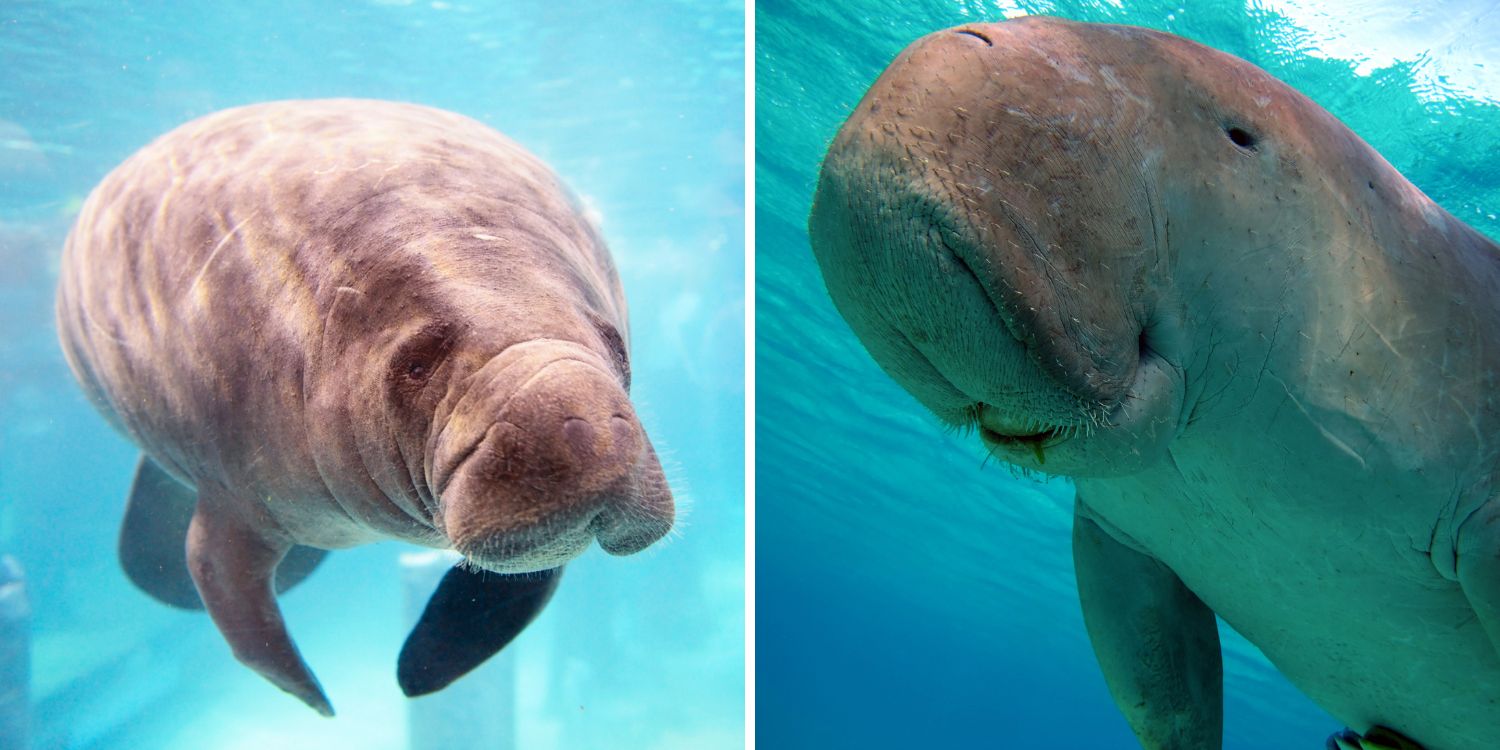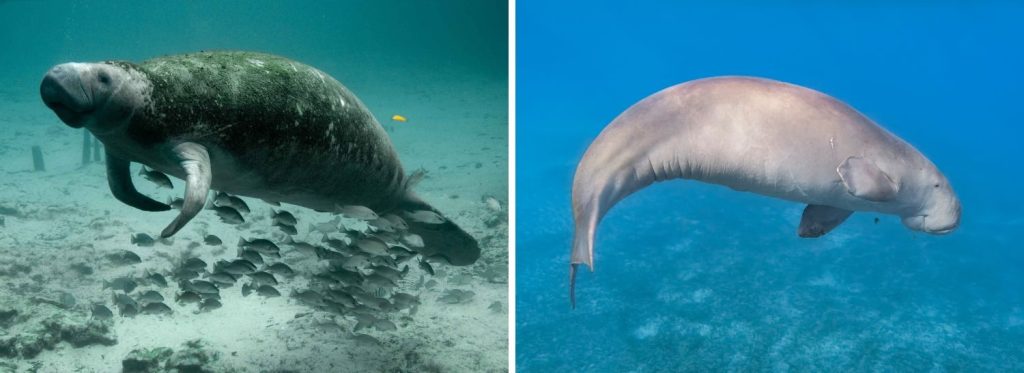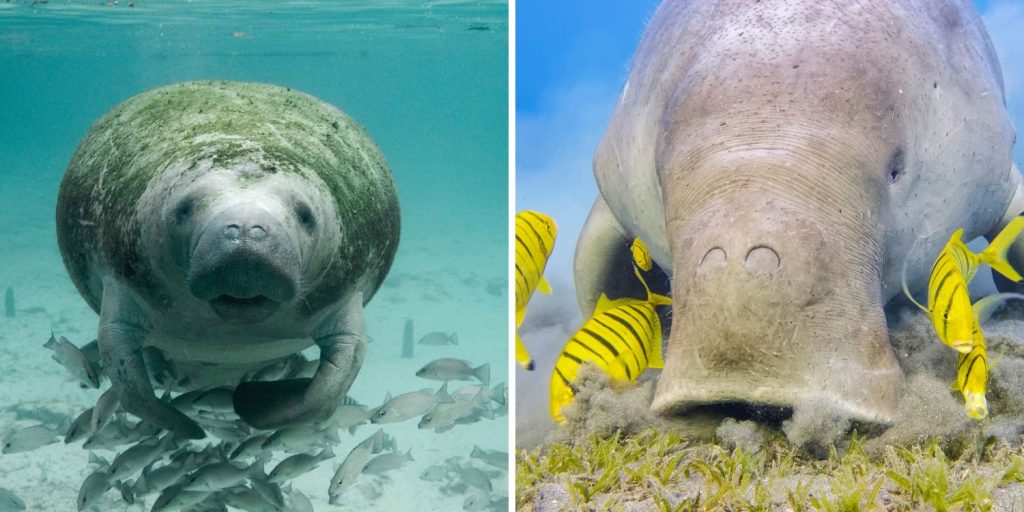
Manatees and dugongs are often lumped together under the affectionate nickname “sea cows,” and at first glance, it’s easy to see why. These large, slow-moving marine mammals share a peaceful demeanor and a love of seagrass. But despite their similarities, they belong to different branches of the same order (Sirenia) and have some fascinating differences.
Here’s a closer look at what sets manatees and dugongs apart—and what they have in common.
Similarities: Sea Cow Cousins
Both manatees and dugongs:
- Belong to the order Sirenia, the only group of herbivorous marine mammals.
- Are large, gray, aquatic animals that graze on seagrass and other vegetation.
- Breathe air and must surface regularly.
- Have paddle-like flippers and horizontally flattened tails.
- Are gentle, slow swimmers who spend most of their time eating or resting.

Different Families, Different Features
While manatees and dugongs are related, they belong to different families:
- Manatees: Family Trichechidae
- Dugongs: Family Dugongidae (the only surviving member of this family)
Where They Live
- Manatees live in the Atlantic basin. You’ll find:
- The West Indian manatee in Florida and the Caribbean.
- The Amazonian manatee in freshwater rivers.
- The West African manatee along Africa’s western coastline.
- Dugongs, on the other hand, live only in the Indo-Pacific region—from East Africa to Australia, especially around northern Australia and Southeast Asia.
Tail Tales
One of the easiest ways to tell them apart is by their tails:
- Manatees have round, paddle-shaped tails—more like a beaver’s tail.
- Dugongs have fluked tails, like a dolphin or whale.
Face Shape and Feeding
- Dugongs have a downturned, trunk-like snout, perfect for grazing on seagrass growing on the ocean floor.
- Manatees have a blunt, flexible upper lip that helps them feed on a variety of aquatic plants—even floating vegetation in freshwater.

Family Life
- Both species usually have one calf at a time, and mothers are very attentive.
- Dugongs tend to be more marine-only, while some manatees can live in fresh, brackish, or salt water.
Conservation Status
Both manatees and dugongs face threats, including:
- Boat collisions
- Habitat loss
- Pollution and red tide
- Entanglement in fishing gear
- The dugong is listed as vulnerable globally, and in some regions, critically endangered.
- Manatees also have protected status, with conservation efforts focused on reducing human impacts, especially in Florida.
Gentle Giants Worth Protecting
Manatees and dugongs may live on opposite sides of the world, but they share the same fate: their futures depend on our efforts to protect the waters they call home. By slowing boat speeds, safeguarding seagrass beds, and reducing pollution, we can help ensure these gentle sea cows continue to glide through our oceans for generations to come.
Disclaimer: This blog post is for edutainment purposes only and may not be entirely accurate.






